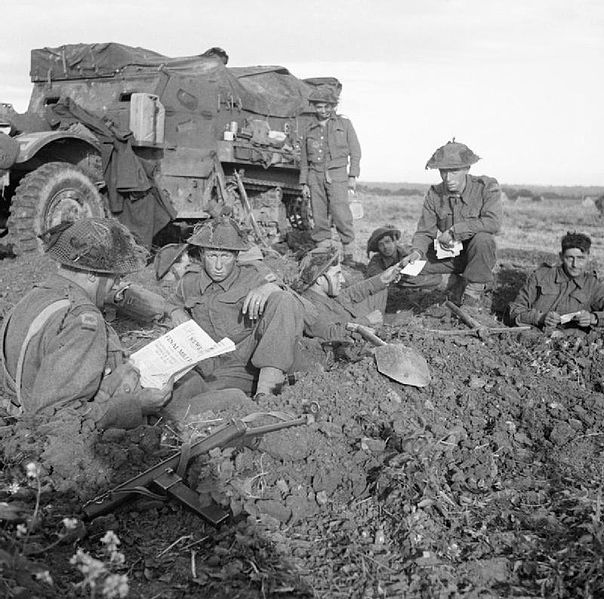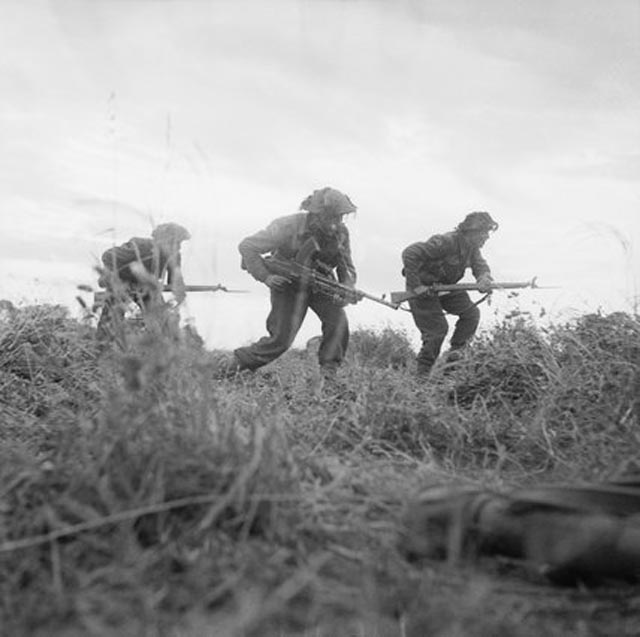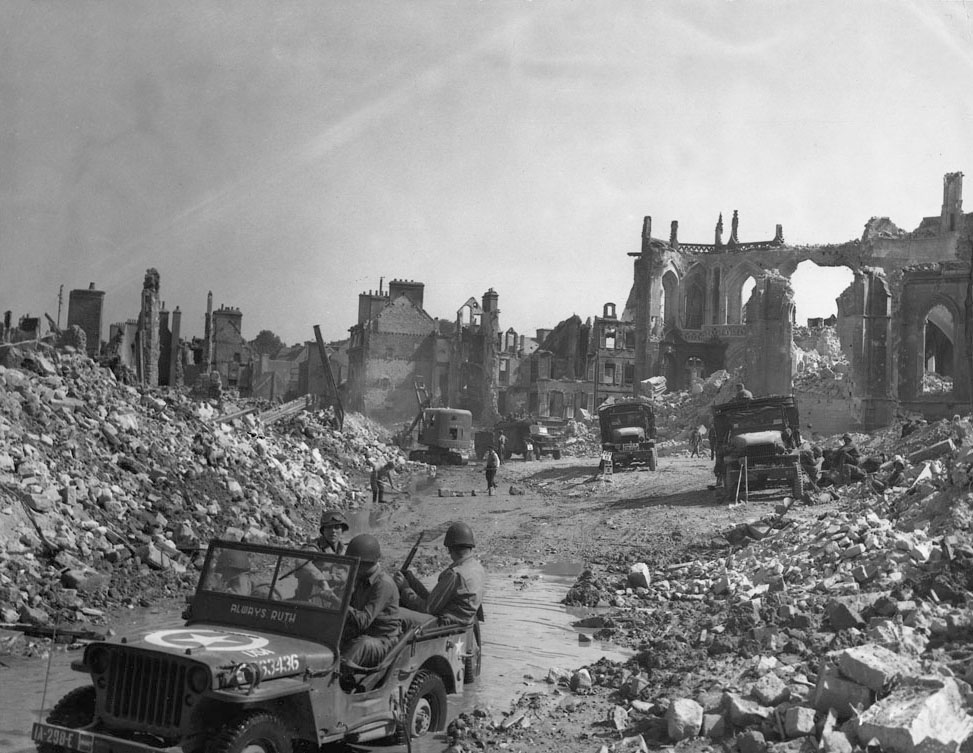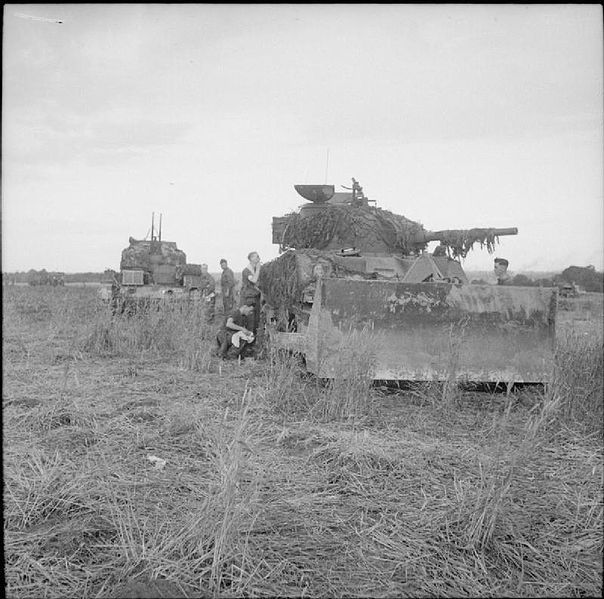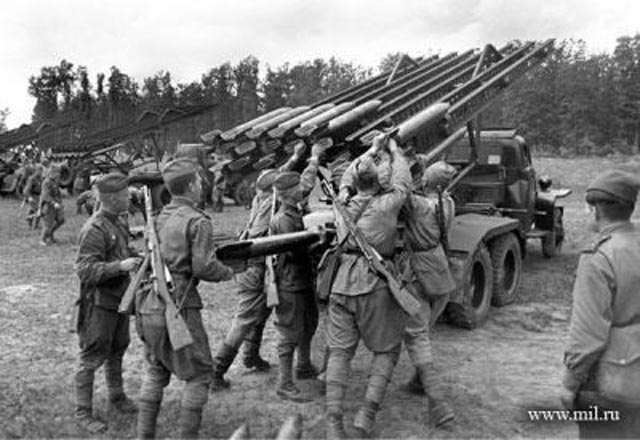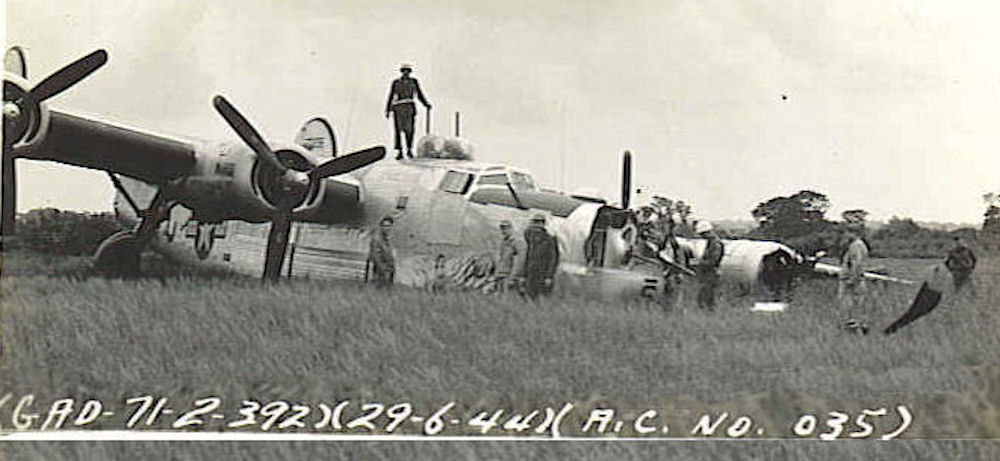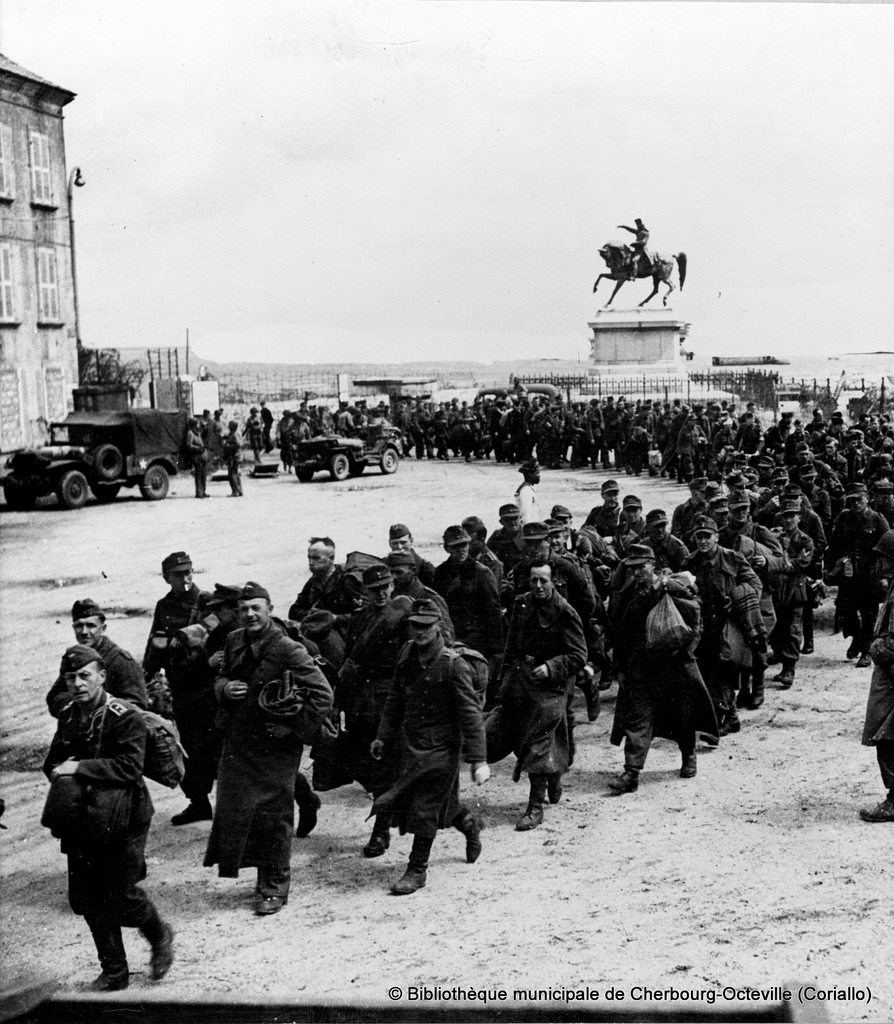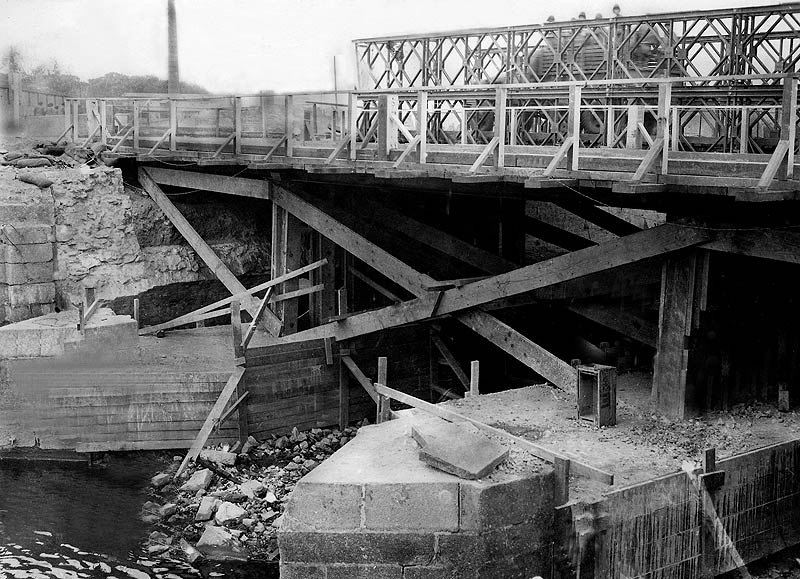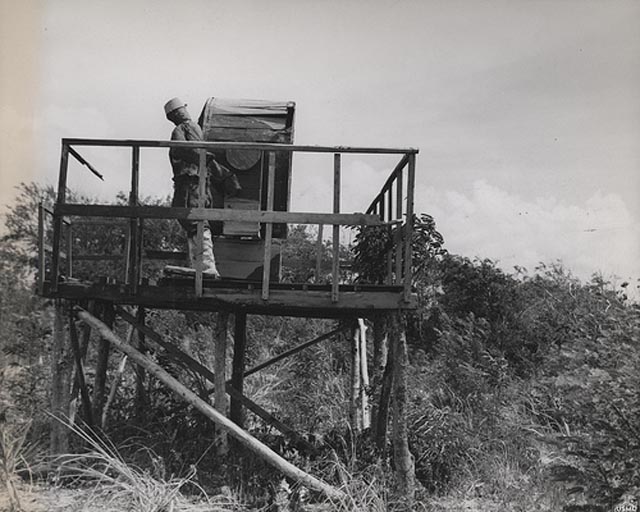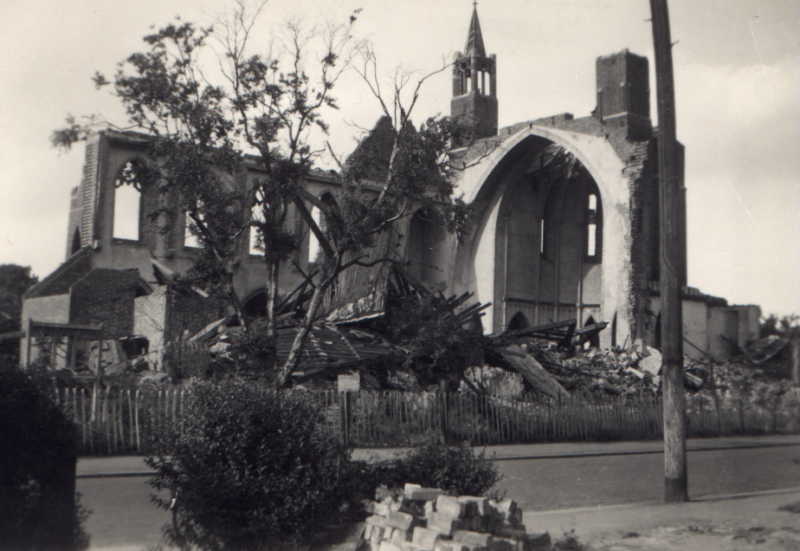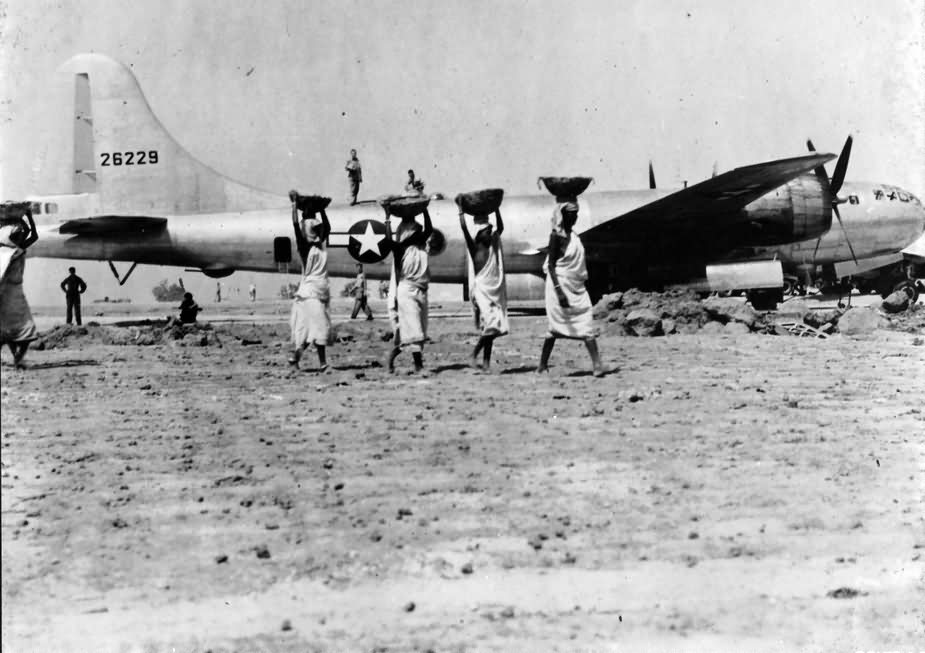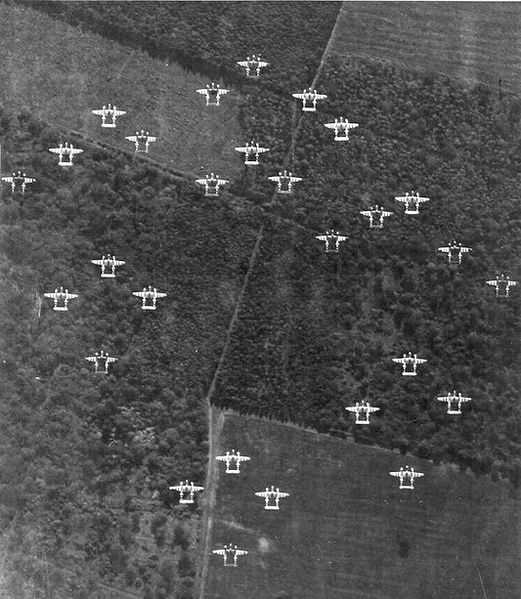Air Operations, Carolines
VII Bomber Command B-24s attack the Truk Atoll.
[Air Operations, CBI
BURMA- 23 10th Air Force B-25s attack Tamu.
- 1 B-25 attacks targets near Mohnyin.
- 19 10th Air Force fighter-bombers attack Myitkyina and a bridge at Myitnge.
- 16 7th Heavy Bomb Group B-24s airlift fuel to Kamaing.
- 3 308th Heavy Bomb Group B-24s attack port facilities at Takao, Formosa.
- More than 60 341st Medium Bomb Group B-25s and 14th Air Force fighter-bombers attack numerous targets in the Tungting Lake region.
- A 76th Fighter Squadron P-51 and a 74th Fighter Squadron P-40 each down a Ki-43 'Oscar' fighter near Hengyang during an afternoon engagement.
- 14th Air Force P-40s attack rail traffic and a bridge at Phu Lang Thuong.
- 45 10th Air Force B-25s airlift ammunition to Imphal.
Air Operations, Europe
RAF BOMBER COMMANDDaylight Ops:
- 286 Lancasters and 19 Mosquitos of Nos. 1, 5 and 8 Groups attack 2 flying bomb launching sites and a store. There is partial clouds over all the target with the bombing being both accurate and scattered.
- 3 Lancasters and 2 Mosquitos are lost including the aircraft of the Master Bomber on the Siracourt site raid. This was Flight-Lt S. E. C. Clarke of No. 7 Squadron, but he survived.
- 2 Mosquitos make Ranger patrols and 1 shoots up an E-boat on the return flight to England.
- There are no losses.
- 14 Mosquitos make flying bomb patrols, 8 Stirlings lay mines off the Biscay coast, 16 aircraft are on Resistance operations and 2 Fortresses make RCM sorties. 1 Mosquito shoots down a flying bomb which may be the first success of No. 100 group against flying bombs.
- There are no aircraft losses.
GERMANY:
- Of 1,150 8th Air Force heavy bombers dispatched, more than 400 abort due to assembly problems in heavy clouds over England. 705 B-17s and B-24s, however, attack ten aircraft-industry factories, a motor-vehicle factory, a synthetic plant, a ball-bearing factory, a marshalling yard, seven airdromes, and a military encampment, all in or around Leipzig.
- 6 B-17s and 9 B-24s are lost
- Escort for the Leipzig mission is provided by 674 VIII and IX Fighter Command fighters. On the return flight, fighters from 9 escort groups attack locomotives and rail cars, motor vehicles, barges, and German Army troops. USAAF escort fighter pilots down 35 Luftwaffe fighters over Germany between 0840 and 1012 hours. The escort fighters also destroy 16 Luftwaffe aircraft on the ground.
- 3 fighters are lost with their pilots
- 4 VIII Fighter Command P-38s attack Axis ships at see off Ijmuiden.
FRANCE:
- Nearly 200 IX Bomber Command B-26s and A-20s attack gun emplacements, rail lines, and rail bridges.
- 9th Air Force fighters and fighter-bombers attack gun emplacements, rail and road traffic, bridges and tactical targets.
- 9th Air force fighter and fighter-bomber pilots down 9 Luftwaffe fighters between 0705 and 1422 hours.
ITALY:
- 12th Air Force B-25s, B-26s, A-20s, and P-47s attack a large number of bridges, viaducts, rail lines, rail cars, locomotives, motor vehicles, landing grounds, ammo dumps, and other targets in or around the Gothic Line.
Air Operations, Marianas
- 318th Fighter Group P-47s bomb and strafe Japanese Army positions on Saipan.
- 2 VF-51 F6Fs down a G4M 'Betty' bomber at sea at 0600 hours.
- A 6th Night Fighter Squadron P-61 downs a G4M 'Betty' near Saipan at about 2230 hours.
Air Operations, New Guinea
- 5th Air Force bombers and fighter-bombers attack Japanese Army troop concentrations at Aitape, barges at Noemfoor Island, occupied villages in the Maffin Bay area, targets of opportunity in the Wewak area, and airfields and antiaircraft emplacements at Babo, Monokwari, Moemi, and Waren.
- V Bomber Command B-24s assigned to attack Noemfoor Island are grounded by bad weather over the Nadzab-area bases.
Battle of the Atlantic
U-984 attacks the Omaha-beach-bound Convoy EMC-17 about 30 miles south of the Isle of Wight torpedoeing the US freighters Edward M. House (7176t), H. G. Blasdel (7176t), James A. Farrell (7176t) and John A. Treutlen (7198t). Edward M. House resumes her voyage and reaches the beachhead to discharge cargo and disembark troops suffering only 2 men injured. H. G. Blasdel suffers the loss of 76 troops and 180 are injured of the 436 on board. Tank landing ship LST-326 takes off the surviving troops. The ship is towed to Southampton where she is declared a total loss. James A. Farrell is abandoned with survivors being transferred to LST-50. 4 soldiers are killed and 45 wounded of the 421 on board. She is towed to Spithead and written off as a total loss. John A. Treutlen is abandoned except for a skeleton crew. Her crew and Armed Guard are picked up by Canadian corvette Buctouche and the tank landing ship LST-335. She will be subsequently written off as a total loss.
[CBI
BURMAIn the NCAC area, Col Charles N. Hunter takes command of all US troops at Myitkyina. The 1st Battalion of tht 42nd Regiment, Chinese 14th Division, after making considerable progress through enemy territory, is halted by enemy fire. Company F, NEW GALAHAD, attempts to support the battalion but loses its way and is destroyed as a fighting body.
[Diplomatic Relations
President Roosevelt informs Prime Minister Churchill that ANVIL is vital the the success of the Normandy invasion. He remindes Churchill of the agreement at Tehran that France is to be the decisive theater in 1944. An advance north in Italy, as the prime minister proposes, folowed by offensive operations int Yugoslavia and Hungary would be done in difficult terrain and with limited logistics support. ANVIL's advance north in support of the Normandy forces would be slow, but not as slow as an advance through the Alps, which would contribute little or nothing to the Allied effore in France. For these reasons, Roosevelt stands by the decision that ANVIL will go as planned. The president also makes it clear that no US forces will be used in the Balkans and notes that there will be 21 divisions and 5,500 aircraft in the Mediterranean Theater available for offensive operations even after the ANVIL forces have been removed. Roosevelt also reminds his fellow politician that the political cost of informing American voters that US forces are being sent somewhere other than France would be catastrophic for him.
[Eastern Front
(30th?)Rokossovsky's 1st Belorussian Front takes Bobryusk, the last German stronghold on the Fatherland Line, opening up the way to Warsaw. To the west they also capture Slutsk and Lyuban and a little to the north they are across the Berezina. Near Polotsk Bagramyan's men seize Usachi.
CENTRAL SECTORBarely a week after the Soviet offensive began, Army Group Center has lost 130,000 killed and 60,000 captured and the bulk of its 900 panzers and assault guns destroyed.
On the northern flank the IX Corps of the 3rd Panzer Army loses Usachi to the 1st Baltic Front while the 4th Army retreats across the Drut. Heavy fighting also rages at Rudnya as the Soviet infantry forces reach the Berezina, and fierce battles rage at Studenka.
To the south the German 9th Army tries to break out from Bobruisk but is repulsed. The XXXV Corps practically ceases to exist while the XLI, also encircled following its march east to relieve the XXXV, is under heavy fire. In intense fighting the Germans push 20 miles north of the town but suffer heavy losses. Rokossovsky continues to drive his forward units toward Minsk, Group Pliev taking Slutsk.
[Italy
In the western sector of the front units of the US 34th Div are heavily engaged by the 16th Panzergrenadiere SS not far from Cecina. To the east, on the British 8th Army front, von Vietinghoff's German 10th Army is in general retreat. The South African 6th Arm Div reaches Acquaviva and Montepulciano, and the 78th Div Castiglion del Lago.
[Mariana Islands
SAIPANThe 6th and 8th Marines, 2nd Marine Division, continue to clear the rugged terrain on the left flank of the corps. The 6th Marines captures Mount Tipo Pale. The 27th Division's 106th Infantry, after regrouping, breaks Japanese resistance at Purple Heart Ridge and Death Valley with the 1st and 2nd Battalions of the 106th Infantry and the 3rd Battalion of the 105th abreast, gaining about 1,000 yards. To the right, the 2nd Battalion of the 165th tries in vain to take the northernmost hill of Purple Heart Ridge. The 4th Marine Division, with elements of the 165th Infantry still attached, consolidates and improves its positions on the right flank of the corps, meeting strong opposition on the left.
The 27th Infantry Division has suffered over 1,800 casualties since landing on Saipan. The 2nd Marine and 4th Marine Divisions have lost about 4,400 men each in 15 days of combat.
[New Guinea
On Biak, the 34th Infantry continues mopping up in the region north of the 186th Infantry against little opposition. Mortars and tanks fire on East Caves, from which engineers have recently received fire. Lt-Gen Eichelberger and the I Corps staff depart Biak for Hollandia. Biak, now securely in American hands, protects Hollandia and limits any Japanese movement from their base at Manokwari on the Vogelkop Peninsula in western New Guinea.
On the Aitape front, Gen Hall reorganizes TF PERSECUTION into 3 commands--Western Defense Area (Brig-Gen Alexander N. Stark, Jr), Eastern Defense Area (Gen Gill), and Eastern Defense Command (Gen Clarence Martin). Gen Martin's command, holding the outer defense line along the Driniumor River, includes the 3rd Battalion of the 127th Infantry, the 128th Infantry (less the 3rd Battalion), and the 112th Cavalry RCT.
At Sarmi, the 158th RCT is designated as the Noemfoor Task Force. Elements of th 6th Infantry Division reach the Maffin airfield past Lone Tree Hill, even as the battle on Lone Tree Hill continues.
[Pacific
- The Japanese minelayer Tsugaru is sunk by the US submarine Darter (SS-227) in the Netherlands East Indies area.
- The US submarine Flasher (SS-249) attacks a Japanese convoy and sinks the merchant cargo ship Nippo Maru (6079t) and damages the oiler Notoro about 125 miles southeast of Singapore.
- The US submarine Growler (SS-215) sinks the Japanese transport Katori Maru (1920t) in the Luzon Strait.
- The US submarine Sturgeon (SS-187) attacks a Japanese convoy and sinks the army cargo ship Toyama Maru (7089t) in the Nansei Shoto off Taira Jima.
Western Front
The last of the German strongpoints in the Cherbourg harbor area surrenders. The VIII Corps sends the 101st Airborne Div to Cherbourg.[WF]
British forces expand their Odon River bridgehead but break off the offensive in view of German concentrations of armor.[CAEN]
[Images from June 29, 1944
|
|
|
|
|
|
|
|
|
|
|
|
